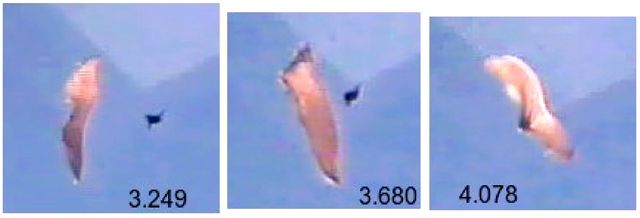Leopold Aga
On February 2, Leopold launched into a "dust devil" at takeoff. He was suddenly lifted and his canopy immediately collapsed "at a low height of several tens of meters" with "no opportunity to open the reserve parachute." He fell back onto the launch ramp. He "never had any chance of survival," said a report.
-----------------------
A minor dust devil is simply a thermal core that kicks up some dust. Hang glider pilots watch for them at no-wind mountain launches to catch an elevator into the sky. Yes, we prefer big, slow, fat ones and not the narrow, fast-spinning little ones - but because the big ones are easier to work for lift, not so much because they might threaten to kill us.
The methodology I adopted early in my flying career involved placing streamers below my takeoff point - at least one about 100 feet down the hill and two about fifty feet off to each side of it. More are useful.
Thermals come in all sizes, from Volkswagen to grocery store sizes. On the ground, they spin, but as they lift and grow larger, they lift off, pulling air into them. To choose a big, fat one, the pilot watches the streamers. Until the thermal arrives, the streamers are slack.
As the thermal nears, the streamers can indicate wind blowing down the hill. This is a good sign. Air from higher up the hill is being pulled into the approaching thermal. The streamers will dance around as the thermal passes through them, then reverse direction and point up the hill. Only one or two streamers pointing up the hill can indicate a thermal passing off to the side or a smaller thermal than is desired. Wait.
When all streamers point up the hill, you know the thermal is probably large, smooth and tall. Shoulder your hang glider. Begin a ten-second count. If the streamers are still standing out toward you after ten seconds, it suggests the thermal will be smooth and lifty for another ten seconds. Those seconds - eleven to twenty - are your launch window. Don't stand there and look at it. Go. It is the safest part of the thermal to launch into.
Do not try to work the thermal for lift. Fly straight through it at good control speed. Determine its smoothness and size. As lift diminishes and you are at altitude sufficient to recover from turbulence, turn along the ridge then return to the vicinity of the thermal and, when you encounter lift, count to four then execute a turn away from the ridge. At the 180-degree point, if the thermal is smooth and you are gaining altitude, you may wish to tighten the turn and circle up.
I am a pilot, not a stuntman. I would never even consider flying a highly-modified and slow-responding parachute in thermal turbulence. For that, you must seek out the advice of soaring parachutists like Leopold Aga, Willi Muller or USHPA paragliding safety co-chairman David Norwood, to name a very few.
----------------------------------------

More on my thermal research can be found here:
https://web.archive.org/web/20120423121 ... lusion.htm












